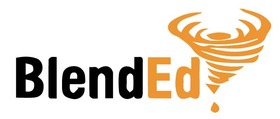Digital Age Skill: Atmosphere Unit - Empowered Learner Activities
Atmosphere Unit - Empowered Learner Activities
Description of the Lesson
Overview
Before beginning this unit, students will complete this self-assessment document. Next, students will set two goals: unit test score, SMART goal for project. At the end of the unit, students will each complete a mini-project/artifact. Students will create action plans for their mini projects. Projects will be graded using a rubric by the student and by the teacher.
ISTE Standard
Empowered Learner 6-9 Grade Level Expectations: 1a Students develop learning goals in collaboration with an educator, select the technology tools to achieve them, and reflect on and revise the learning process as needed to achieve goals.
NE Standard
SC.6.12.4 Gather, analyze, and communicate evidence of factors and interactions that affect weather and climate.
Rubric Used for Assessment
Rubric Download
Example Student Artifact(s)
Student Example 1
Student Example 2
Lesson Design Reflection
Lesson Design:
Atmosphere Unit - Empowered Learner Activities
*Summary: Before beginning this unit, students will complete this self-assessment document. Next, students will set two goals: unit test score, SMART goal for project. At the end of the unit, students will each complete a mini-project/artifact. Students will create action plans for their mini projects. Projects will be graded using a rubric by the student and by the teacher.
Subject and Grade Level: Science, Earth Science, Grade 8
Student Learning Objectives:
*Students will learn about factors affecting weather and climate, including the layers of the atmosphere, the relationship between pressure and temperature, Earth’s energy budget, the greenhouse effect, and clouds.
State Standard(s):
*SC.6.12.4 Gather, analyze, and communicate evidence of factors and interactions that affect weather and climate.
ISTE Standard:
*Empowered Learner 6-9 Grade Level Expectations: 1a Students develop learning goals in collaboration with an educator, select the technology tools to achieve them, and reflect on and revise the learning process as needed to achieve goals.
HOOK/ATTENTION GETTER:
*Introduce students to weather-related phenomena: polar vortex, solar minimum, climate change graphs, hurricane damage.
DIRECT INSTRUCTION:
*Students will gather knowledge on these topics in class through a combination of direct instruction and EdPuzzles that I have created to introduce topics, provide examples, and ask questions.
GUIDED PRACTICE:
*The teacher will guide students in small groups. In these small groups, we will do scientific demonstrations, explain data, study graphics, and answer questions. In addition, students will be given the option to complete worksheets, answer questions from their eBook, and take part in mini-lessons on cK-12.
INDEPENDENT PRACTICE:
*Students will work independently in this unit watching EdPuzzles, taking notes, and completing online gamified quizzes such as Kahoot and Quizizz.
WRAP-UP:
*At the culmination of the unit, each student will create a learning artifact of their choice.
Personal Reflection
What Went Well: Students did a great job with the actual self-assessment piece.
What I Would Do Differently: I would add a "Goal" element to my self-assessment. After they list their pre-test score, I would have them put a goal for their post-test score.
